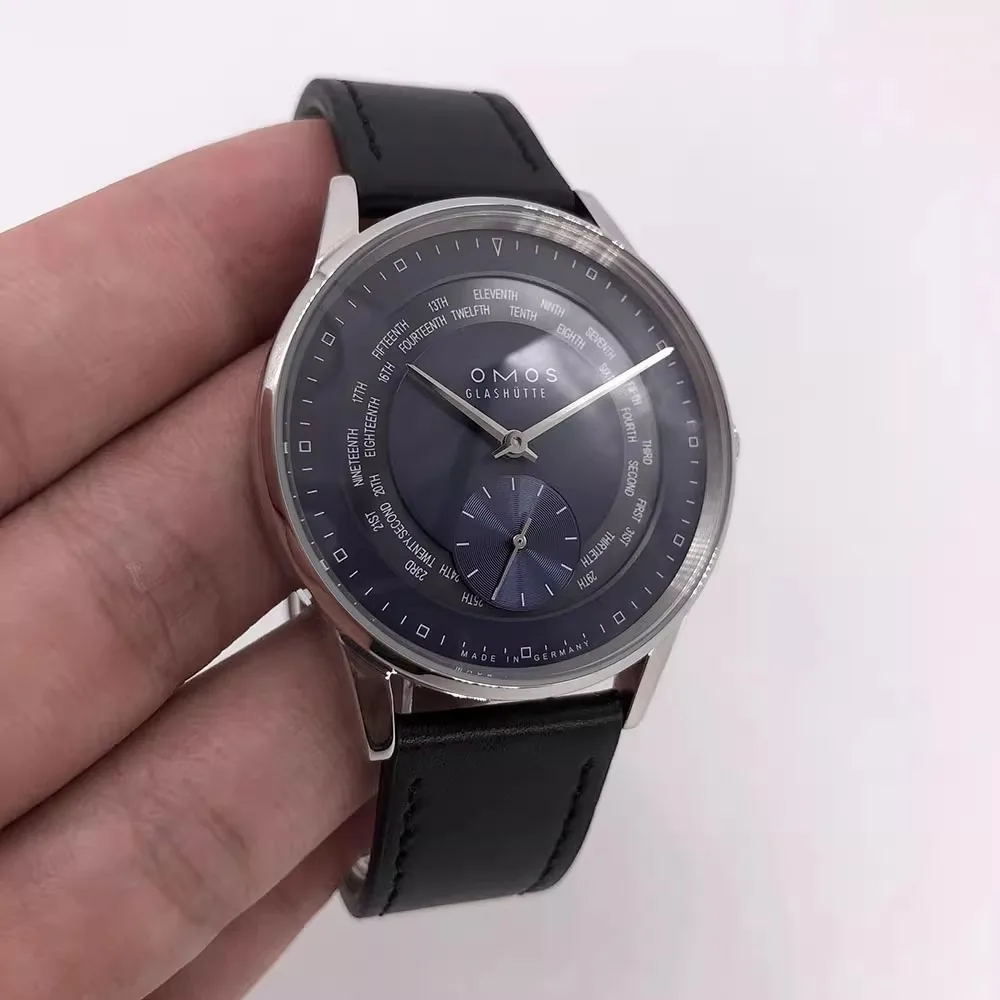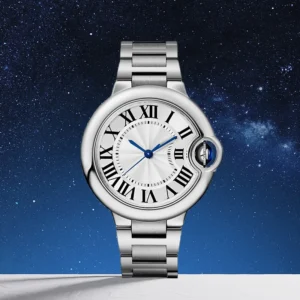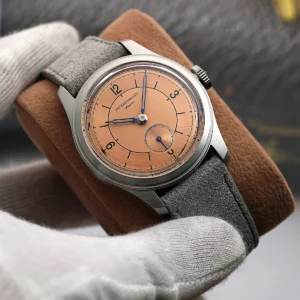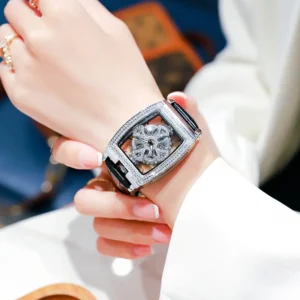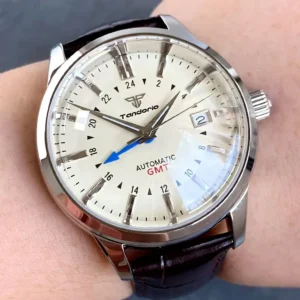Introduction: The Essence of Formal Timekeeping
Formal watches represent the pinnacle of horological refinement—characterized by slim profiles, premium materials, and understated elegance that transcends fleeting fashion trends. These timepieces aren’t merely instruments for measuring hours and minutes but are expressions of sophistication that complement formal attire while embodying watchmaking tradition.
The evolution of formal watch design tells a fascinating story of how aesthetic preferences, technological advancements, and social conventions have shaped what we consider elegant on the wrist. From the ornate pocket watches of yesteryear to the sleek dress watches of today, formal timepieces have maintained their essential character while adapting to changing tastes.
This journey from pocket to wrist represents more than a change in where we wear our watches—it reflects broader cultural shifts in how we perceive time, status, and personal style. Iconic models like the rectangular Cartier Tank and the round Patek Philippe Calatrava have become timeless references that continue to influence classic vs minimalist dress watches across generations.
From Pocket to Wrist: The Dawn of Formal Elegance
The transformation from pocket watch to wristwatch marked the first major evolution in formal timepiece design. Until the early 20th century, a gentleman’s timekeeper was exclusively carried in a waistcoat pocket, often attached to a decorative chain. These pocket watches featured elaborate engravings, large white dials with black Roman numerals, and protective hunter cases that exemplified Victorian and Edwardian sensibilities.
World War I dramatically altered this tradition when officers began strapping pocket watches to their wrists for practical battlefield timekeeping. These early “wristlets” featured wire lugs soldered onto converted pocket watches, creating the first purpose-built men’s wristwatches. What began as a military necessity soon transitioned to civilian life, with watchmakers adapting their designs to suit this new position on the body.
By the 1920s, the wristwatch had overcome its initial reputation as feminine jewelry to become an accepted men’s accessory. Early formal wristwatches retained many pocket watch elements—round cases, enamel dials, and slim proportions—but began developing their own aesthetic identity. Designs from this transitional period laid the groundwork for what would become the enduring archetype of classic dress watch minimalist styles.
Art Deco Revolution & Geometric Grandeur (1920s-1930s)
The 1920s ushered in the Art Deco movement, which revolutionized formal watch design with bold geometric shapes that departed dramatically from traditional round cases. This period witnessed the birth of rectangular, tonneau (barrel-shaped), and cushion-formed watches that broke conventions while establishing new classics. These designs reflected the era’s fascination with modernism, industrial progress, and architectural symmetry.
Louis Cartier’s creation of the Tank watch—inspired by the aerial view of military tanks from World War I—exemplified this new design philosophy with its rectangular case, clean lines, and Roman numerals. Similarly, Jaeger-LeCoultre’s Reverso, introduced in 1931, featured an ingenious reversible case originally designed for polo players that became an enduring symbol of Art Deco watchmaking elegance.
These innovative case shapes demanded new dial designs to complement their geometry. Roman numerals remained popular but were often stylized to match the overall aesthetic. Railroad minute tracks, a holdover from pocket watches, provided precision while contributing to the architectural appearance. The distinctive watches from this era continue to influence contemporary square rectangular automatic watches that maintain their sophisticated appeal nearly a century later.
Mid-Century Minimalism: The Golden Age (1940s-1960s)
Following World War II, formal watch design entered what many consider its golden age—a period of refined simplicity and perfect proportions. The exuberance of Art Deco gave way to more restrained elegance, with many manufacturers returning to round cases but with a distinctly modern sensibility. This era established the quintessential formal watch formula that continues to influence contemporary design.
Case diameters typically ranged from 32mm to 36mm—considered the ideal proportions for a dress watch that could disappear beneath a shirt cuff until needed. Thickness became a key consideration, with watchmakers competing to create ever-slimmer movements that allowed for exceptionally thin profiles. Yellow and rose gold remained the preferred materials for formal occasions, though white gold and platinum gained popularity for their subtle sophistication.
Dial design achieved new heights of restraint during this period. Painted numerals largely gave way to applied indices—thin gold markers that caught the light and provided dimensional interest without visual clutter. Dauphine hands (triangular and faceted) and baton hands (straight and polished) became the dominant styles, while seconds hands were often eliminated entirely in service of elegance minimalist dress watch design. The Patek Philippe Calatrava and Vacheron Constantin Patrimony emerged during this era as definitive expressions of formal watch ideals.
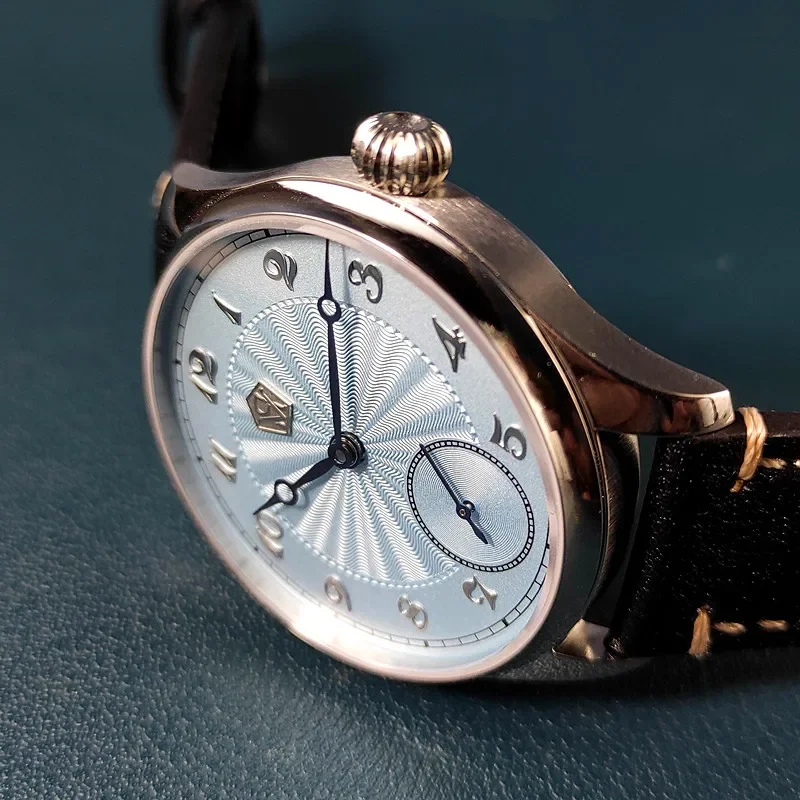
The Quartz Disruption & Mechanical Renaissance (1970s-1980s)
The 1970s brought the quartz crisis—a technological revolution that threatened to render traditional mechanical watchmaking obsolete. As battery-powered movements offered unprecedented accuracy at lower costs, many established watch manufacturers faced extinction. This disruption had profound effects on formal watch design, creating both challenges and opportunities.
Quartz technology enabled ultra-thin dress watches that mechanical watchmaking couldn’t match. Brands like Piaget leveraged this advantage to create formal timepieces measuring just a few millimeters in thickness. Meanwhile, the Swiss mechanical watch industry responded by repositioning itself as a luxury product category focused on craftsmanship rather than pure timekeeping precision.
This period also witnessed the emergence of the luxury sports watch concept, exemplified by Audemars Piguet’s Royal Oak designed by Gérald Genta. While not strictly formal watches, these integrated bracelet designs with distinctive geometric cases influenced the broader conversation about what constituted elegance in wristwear. For those seeking traditional elegance without compromising on modern engineering, thin automatic dress watches became increasingly sought-after as manufacturers demonstrated their technical prowess through refined mechanical movements.
Neo-Classicism & The Return to Heritage (1990s)
The 1990s marked a decisive return to traditional values in formal watchmaking. Having weathered the quartz crisis, mechanical watch companies embraced their heritage with newfound confidence. This neo-classical period saw manufacturers diving into their archives to resurrect and reinterpret classic designs from their golden eras.
Traditional dial decorations experienced a renaissance, with guilloché (intricate engraved patterns), enamel, and other classical techniques returning to prominence. Breguet hands—with their distinctive eccentric circles near the tips—and other historical elements found their way back onto the dials of premium formal watches. Case sizes remained conservative compared to the sports watch trend that was simultaneously developing.
This period also witnessed the revival of independent watchmaking, with master craftsmen establishing small ateliers dedicated to traditional methods and designs. These independents often focused on formal watches as their flagship offerings, emphasizing hand-finishing and horological purity. The appreciation for such craftsmanship has continued to grow, with modern automatic dress watches often featuring meticulous hand-finishing that celebrates watchmaking heritage.
Contemporary Formality: Tradition Meets Innovation (2000s-Present)
Today’s formal watch design represents a sophisticated balance between respecting traditions and embracing subtle innovations. Contemporary formal timepieces tend to reference historical designs while incorporating modern sensibilities and technological advancements. After a period when case sizes expanded significantly, recent years have seen a return to more moderate proportions that better align with formal watch traditions.
Material innovation has been particularly notable, with watchmakers exploring alternatives to traditional precious metals. High-tech ceramics, titanium, and proprietary alloys occasionally appear in formal contexts, though often with conservative finishing to maintain elegance. Dial fabrication has reached new heights with computer-aided manufacturing allowing for unprecedented precision in traditional patterns while enabling novel textures.
Independent watchmakers have become increasingly influential in formal watch design, with brands like Laurent Ferrier and Philippe Dufour creating timepieces that honor traditional aesthetics while subtly advancing the art form. These watches often feature distinctive case shapes, innovative movement architectures, and exceptional finishing that elevate them above mass-produced alternatives. The diverse approaches seen in modern visual styles mechanical watches demonstrate how formal design continues to evolve while maintaining its essential character.
The Anatomy of Elegance: Case Shapes & Profiles
The case of a formal watch establishes its character before any other element comes into consideration. Throughout history, certain shapes have maintained their association with formality while others have come and gone from favor. The round case remains the most universally accepted formal design, offering perfect symmetry and efficient use of space for the movement within.
Rectangular cases—descendants of the iconic Cartier Tank and similar designs—continue to signify refinement with their architectural presence. Other geometric forms like the tonneau (barrel), cushion, and oval shapes occupy interesting positions within formal watch taxonomy, sometimes considered statement pieces rather than the most conservative options.
Regardless of shape, thinness remains a defining characteristic of the formal watch case. The pursuit of slim profiles has driven innovation in movement design, with manufacturers developing calibers measuring just a few millimeters in thickness. This focus on modern trends thin watch profiles ensures that formal watches maintain their discreet presence, slipping easily beneath shirt cuffs rather than announcing themselves conspicuously.
Dial Design: The Face of Formality
If the case provides the framework, the dial is where a formal watch truly expresses its design philosophy. The evolution of formal dial design reveals changing priorities and technologies while maintaining certain enduring principles of elegance through restraint.
Hour markers have evolved from the ornate painted numerals of early wristwatches to the applied indices that dominate contemporary formal designs. These indices—whether simple batons, faceted arrows, or Roman numerals—provide dimensional interest while maintaining visual clarity. The progression of hand styles similarly reflects changing tastes, from ornate feuille (leaf) hands to streamlined dauphine and baton designs.
Dial textures have cycled between minimalist simplicity and decorative richness. Traditional guilloché patterns—created through engine-turning techniques—fell from favor during the mid-century period of stark minimalism only to return in the heritage-focused designs of recent decades. Modern sunburst, sector, and textured dials demonstrate how contemporary manufacturing can reference traditional aesthetics while creating new visual experiences in classic automatic dress watches.
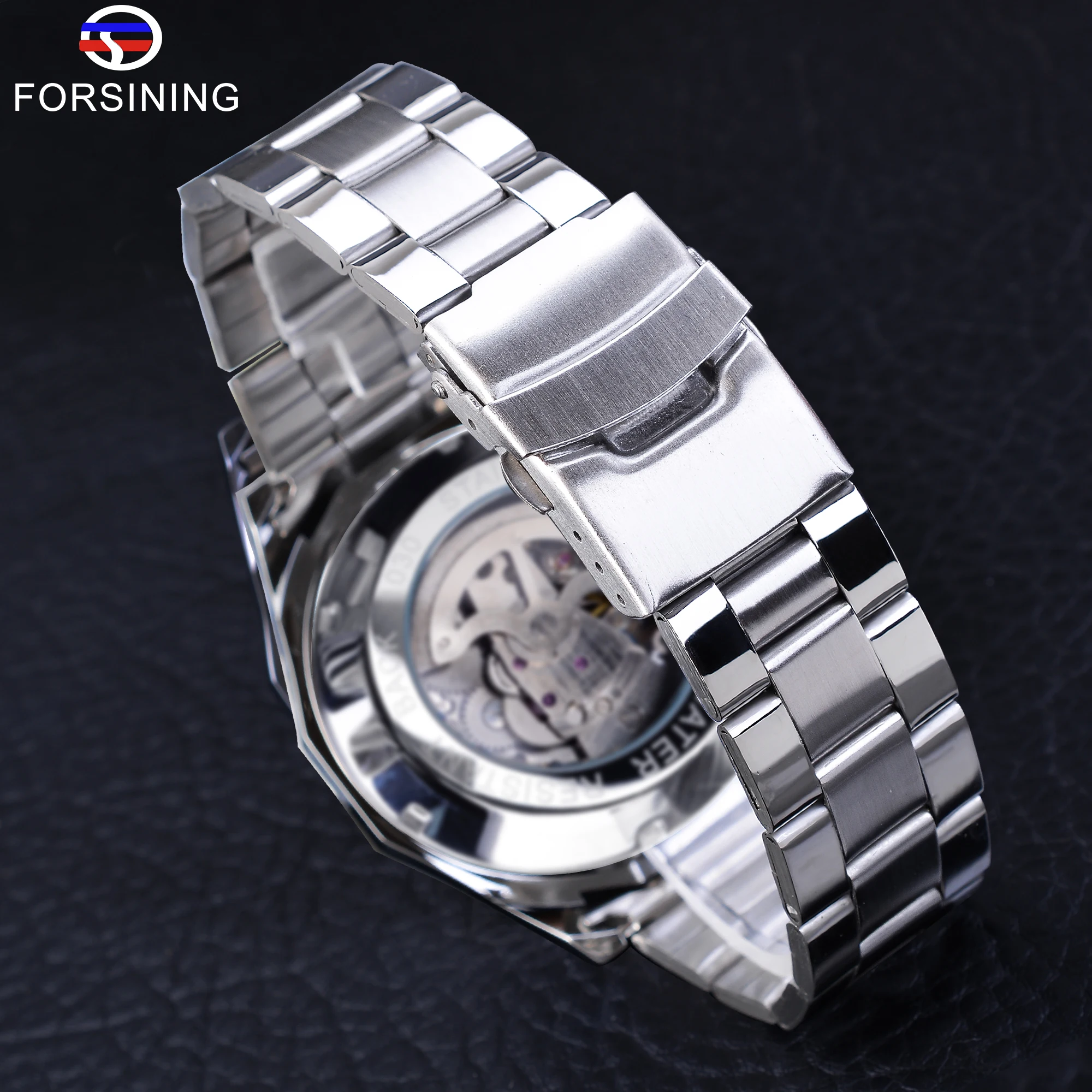
Material Matters: Crafting Prestige in Formal Timepieces
Material selection fundamentally shapes a formal watch’s character, with traditional precious metals historically dominating this category. Gold—particularly yellow and rose variations—continues to represent the classical choice for formal occasions, offering warmth and presence that immediately communicates luxury. White metals like platinum and white gold provide more subtle alternatives while maintaining precious status.
The acceptance of stainless steel in formal contexts represents one of the most significant material evolutions in watch design. Once considered exclusively for sports or tool watches, high-quality steel with exceptional finishing now appears in many formal collections, offering durability and contemporary appeal while maintaining elegance through design and execution.
Strap materials remain somewhat conservative in formal watchmaking, with smooth leather—particularly black or brown alligator—representing the traditional choice. Formal watches typically avoid metal bracelets, rubber, or textile straps that would diminish their refined character. The enduring preference for hand-stitched leather straps on manual wind dress watches demonstrates how even the attachment method contributes to the overall formal aesthetic.
Classic Automatic Dress Watches, Day Date Automatic Watches, Perpetual Calendar Automatic Watches
Price range: $540.60 through $574.60 Select options This product has multiple variants. The options may be chosen on the product pageClassic Automatic Dress Watches, GMT Automatic Watches, GMT Pilot Watches
Price range: $1,240.86 through $1,463.33 Select options This product has multiple variants. The options may be chosen on the product pageClassic Automatic Dress Watches, Thin Automatic Dress Watches
$437.64 Select options This product has multiple variants. The options may be chosen on the product pageClassic Manual Wind Watches, Manual Wind Dress Watches
Price range: $425.50 through $462.50 Select options This product has multiple variants. The options may be chosen on the product page- $104.12 Select options This product has multiple variants. The options may be chosen on the product page
Classic Automatic Dress Watches, GMT Automatic Watches, GMT Dive Watches
Price range: $468.93 through $552.94 Select options This product has multiple variants. The options may be chosen on the product page
Enduring Characteristics of the Formal Watch Archetype
Despite continuous evolution, certain defining characteristics have remained consistent throughout the history of formal watch design:
Understated Elegance: Formal watches prioritize refinement over flamboyance, using subtle details rather than bold statements to express their quality.
Slim Profile: A truly formal watch maintains modest proportions—particularly in thickness—to complement tailored clothing and slide discreetly beneath a shirt cuff.
Refined Finishing: From polished bevels to brushed surfaces, formal watches demonstrate exceptional attention to detail in their execution.
Restrained Complications: While simple time-only displays represent the most conservative approach, certain complications like small seconds, date windows, or moonphases may appear in formal contexts when executed with appropriate restraint.
Quality Materials: Whether traditional precious metals or exceptional examples of more contemporary materials, formal watches exhibit substance and permanence in their construction.
These enduring qualities transcend specific eras and styles, defining what makes a watch appropriate for formal occasions regardless of when it was designed. For visual examples of these principles applied across different designs, a visual guide dress watch styles offers compelling illustrations of formal watch archetypes.
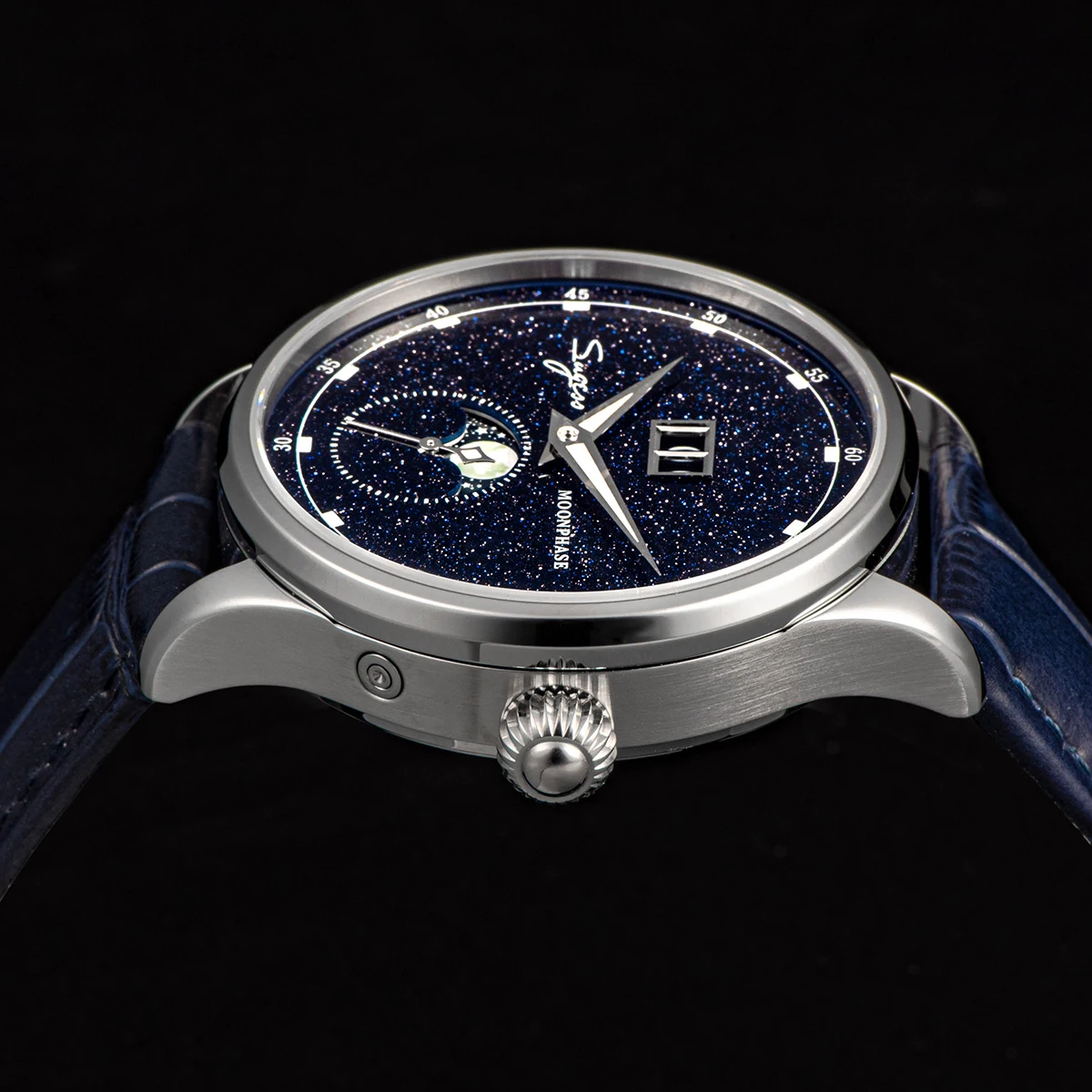
Future Directions: Formal Watch Design in the Contemporary Era
As we look toward the future of formal watch design, several trends suggest promising directions for this enduring category. Heritage brands continue reinvigorating their iconic dress watch lines with subtle modern touches that honor tradition while acknowledging contemporary tastes. These updates typically maintain classical proportions while incorporating advanced manufacturing techniques and improved movements.
Ethical considerations have become increasingly important in luxury watchmaking, with formal watches incorporating responsibly sourced materials and sustainable production methods. This shift reflects broader cultural values while maintaining the quality expectations of the category.
The definition of “formal” itself continues to evolve as dress codes become more fluid in many contexts. Formal watches are adapting to this reality, with designs that maintain their essential elegance while offering versatility across different wearing situations. This adaptability represents perhaps the most significant evolution—formal watches that honor traditions of the past while serving the practical needs of contemporary wearers.
For those interested in exploring current interpretations of formal design principles, the definitive guide minimalist dress watches provides insight into how contemporary watchmakers are balancing heritage with innovation. At Sharp Aspect, we celebrate this ongoing evolution while honoring the timeless qualities that make formal watches enduring symbols of refined taste and appreciation for horological artistry.

